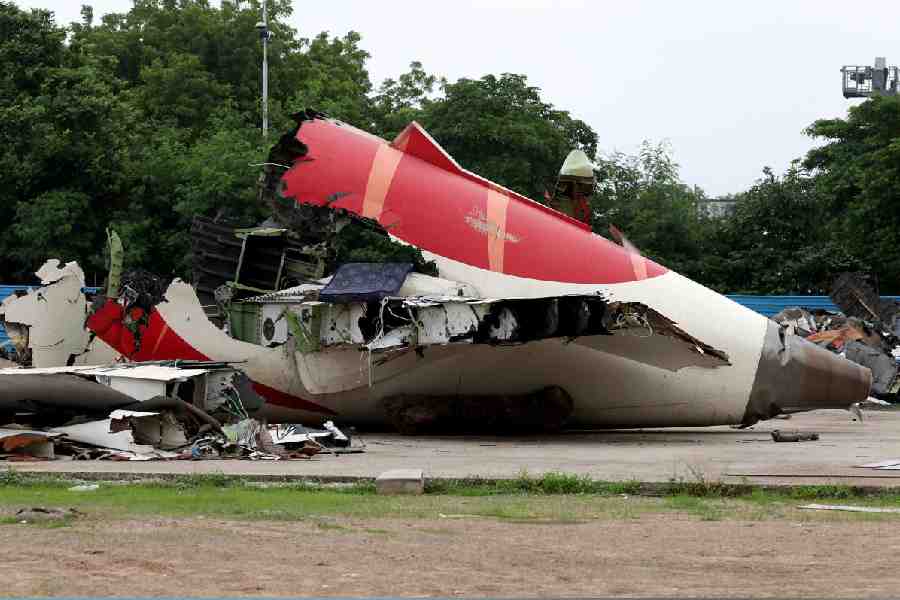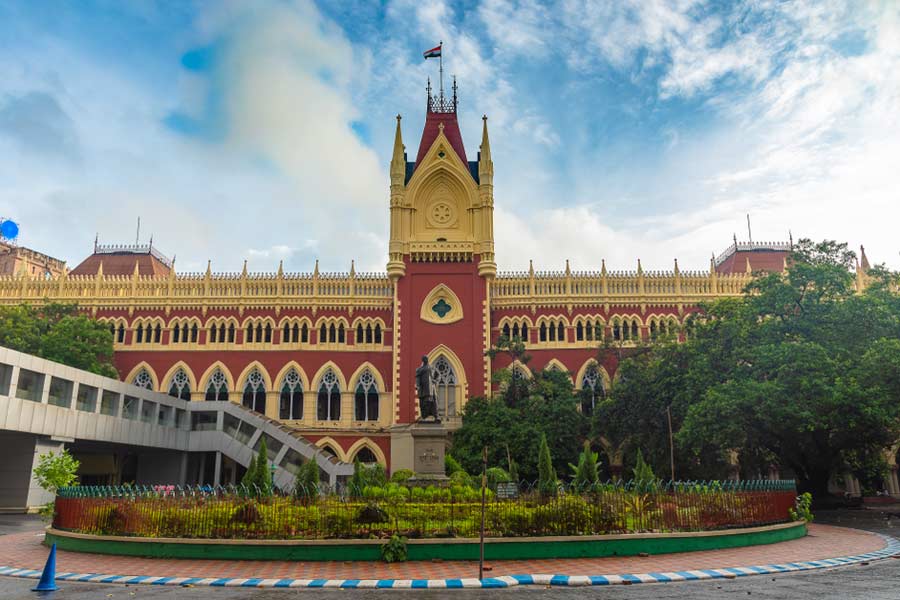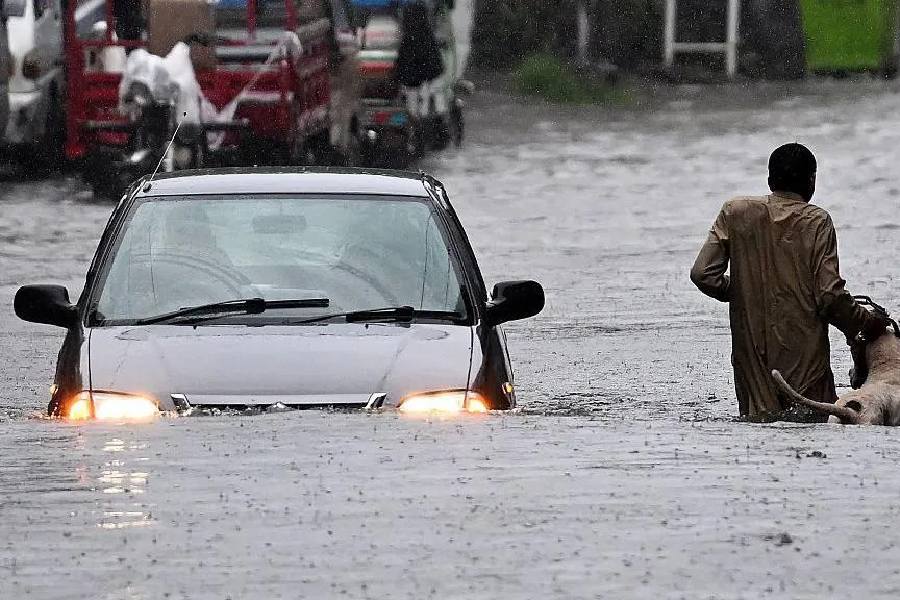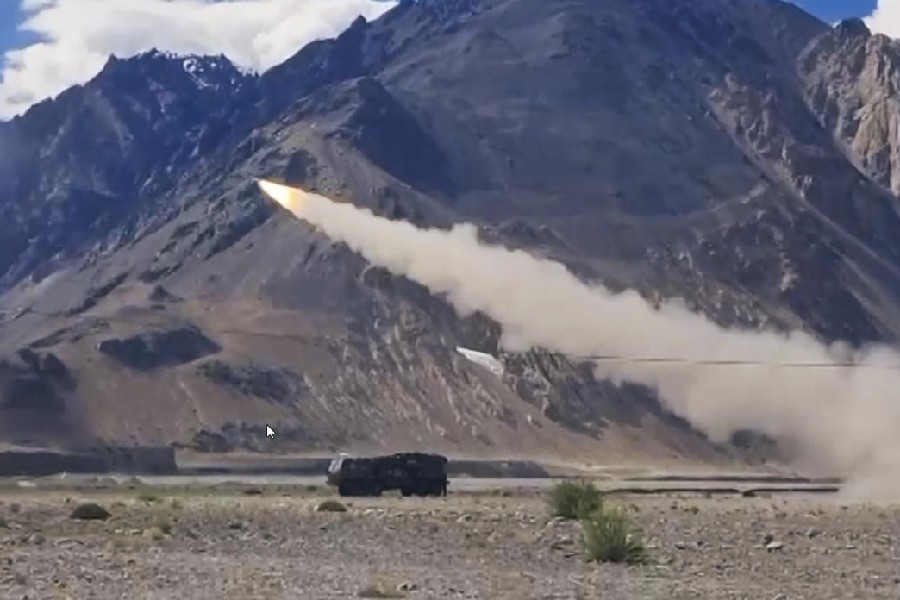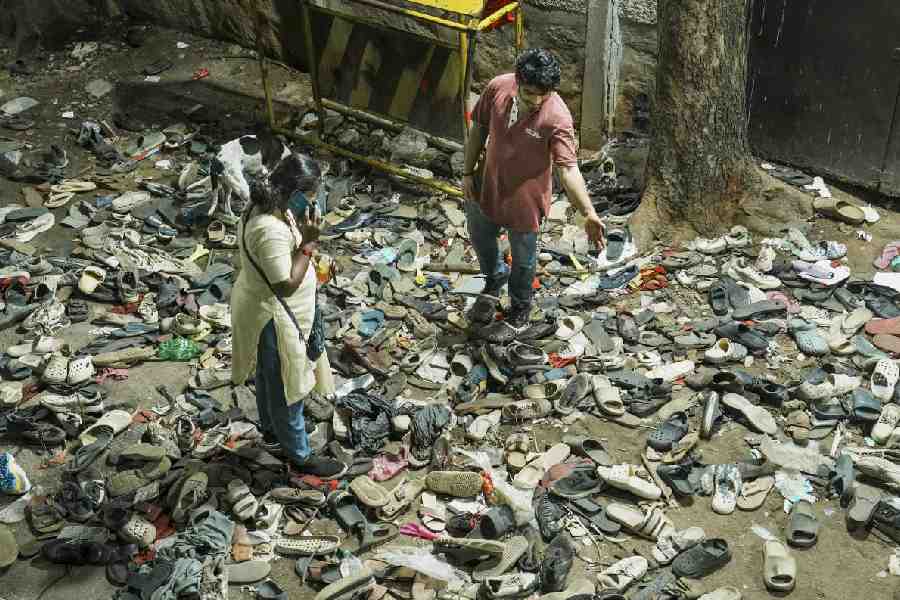 |
 |
| A rescue team at work in Rohtas district after a fresh release of water in the Sone. Picture by Sanjay Choudhary |
Patna, Sept. 26: The threat of floods looms large again on at least nine districts across central, south and north Bihar following unprecedented discharge of water in the river Sone from the Vansagar dam in Madhya Pradesh and Rihand dam in Uttar Pradesh.
The discharge in the Sone today was 9.5 lakh cusecs against 8.39 lakh cusecs on September 11, when the sudden rush of water had sparked panic in Bihar. The river hasn’t received such volumes of water since 1975, as a result threatening areas in central and south Bihar which are normally spared the fury of floods.
The dispute over the sharing of water from Vansagar dam between Bihar and Madhya Pradesh is pending in Patna High Court. A farmers’ body has filed a PIL asking Madhya Pradesh to regulate the flow of water from the dam.
The surging waters, along with the torrential rains in the catchment areas of the Sone and Ganga in the last 48 hours, have inundated hundreds of villages in Bhojpur, Arwal, Aurangabad, Kaimur, Rohtas, Gaya and Patna districts in central and south Bihar, besides Saran and Vaishali in north Bihar.
Meteorologists said an atmospheric depression that created a zone of rain across Bihar while the monsoon withdrew from the northwest caused water levels to rise in several rivers in the state.
The depression that had crossed the Orissa coast last week and has since evolved into a low pressure zone hung over northern Bihar this evening, after wiping out Bihar’s rainfall deficit in the past 24 hours.
“Rainfall over the past 24 hours has been hundreds of times the normal for this time of the year,” said Animesh Chanda, the director of the Patna Meteorological department.
The cumulative rainfall over Bihar since the start of the monsoon on June 1 had until Sunday been about two per cent below the long-period average, Chanda said. “Now, it is four per cent above average,” he said.
The India Meteorological Department said widespread rain and thundershowers are likely to occur over parts of Bihar, northern Bengal, Sikkim and the Northeast during the next 48 hours after which the rains are expected to decrease.
The Sone waters have spilled on to the Chhapra-Patna National Highway 19 at Jhaua and Awatar Nagar. The Sone meets the Ganga at Haldi Chhapra (Bhojpur). A surge in the Sone has caused excess water in the Ganga, affecting the settlements along its bank.
Besides, there is enormous pressure on the banks of the Punpun and Muhane — tributaries of the Sone that crisscross Gaya, Aurangabad and Patna districts. The water has gushed into several villages forcing the people to move to hillocks and other safer places.
A communiqué from the water resources department today said all the embankments along the Sone were “safe”.
Water resources public relations officer Shubchandra Jha said the Bagmati basin’s catchments areas in Nepal today recorded 12 to 89mm of rainfall, posing the threat of floods in Madhubani, Darbhanga and Araria districts of north Bihar.
Though the discharge in the Sone is the highest in 36 years, it can still in no way be compared to the devastation caused by the Kosi in 2008. The Kosi, which originates from Nepal’s highland, had breached its embankment at Kusaha (Nepal) and had changed its course, marooning millions, taking heavy toll of human lives and cattle, ending the existence of hundreds of villages and causing massive destruction to soil and fertility.
On the other hand, the floods caused by the discharge of water in the Sone have so far not taken any human toll. But it has added to human misery as it has hit people who have seldom encountered floods in their life.
Unlike the people living in north Bihar, which are dotted with makeshift wooden and bamboo houses — obvious signs of preparedness against floods — those staying in central and south Bihar’s plateau-like landscape replete with concrete structures besides hillocks and hilltops, are hardly prepared for such a calamity.
Principal secretary, water resources, Afzal Amanullah said: “The flood fighting machinery might have been taken a bit off-guard when over eight lakh cusecs of water was suddenly discharged in the Sone on September 10 and 11. But we are alert to the situation now. Patrol parties comprising technical experts and district officials have been guarding the embankments round the clock while rescue teams are helping the affected people. There is no need to panic.”


